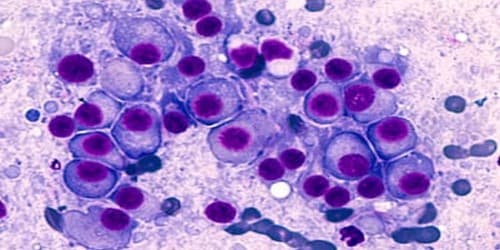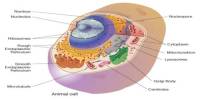Human existence depends on being able to reliably detect heat and discomfort, but scientists have had difficulty figuring out exactly how our bodies perceive these potential threats at the molecular level.
Researchers from the University of Buffalo have now uncovered the intricate biological processes that power these vital processes. They discovered a previously unrecognized and utterly unexpected “suicidal” reaction in ion channel receptors that clarifies the complex mechanisms behind sensitivity to pain and warmth. Their findings were published in the Proceedings of the National Academy of Sciences on August 28, 2023.
The research could be applied to the development of more effective pain relievers.
Imminent danger warning
“The reason for us to have a high temperature sensitivity is clear,” says Feng Qin, Ph.D., corresponding author and professor of physiology and biophysics in the Jacobs School of Medicine and Biomedical Sciences at UB. “We need to tell apart what is cold and what is hot so that we are warned of imminent bodily danger.”
It is therefore impossible to separate sensitivity to temperature and to pain.
“The receptors that sense temperature also mediate transduction of pain signals, such as noxious heat,” Qin says. “Thus, these temperature-sensing receptors are also among the most critical ones to target for pain management.”
For that reason, Qin says that understanding how they work is a first step toward the design of a new generation of novel analgesics with fewer side effects.
The TRP (transient receptor potential) channel family, and in particular TRPV1, the receptor that is triggered by capsaicin, the compound that gives chili peppers their spiciness, has been the focus of the UB researchers. These are cutaneous receptors, located at the endings of peripheral nerves in the skin.
The reason for us to have a high temperature sensitivity is clear. We need to tell apart what is cold and what is hot so that we are warned of imminent bodily danger.
Feng Qin
But figuring out how to demonstrate how thermosensitive these receptors are has been challenging.
According to Qin, proteins take in heat and transform it into enthalpy changes, a type of energy connected to modifications in a protein’s structure. “The stronger a receptor’s temperature sensitivity is, the larger the enthalpy change needs to be,” he says.
He and his colleagues had previously developed an ultrafast temperature clamp to detect in real time the activation of a temperature sensor.
“We estimated its activation energy to be huge, nearly an order of magnitude larger than that of other receptor proteins,” says Qin, noting that the actual total generated by activation is expected to be far higher.
Then they made the decision to attempt to directly quantify the heat uptake of temperature receptors, which Qin describes as “daunting” due to the need for the creation of new procedures and the purchase of pricey and complex apparatus.
Like detonating an atomic bomb
Using the TRPV1 receptor as a prototype, they found that heat induces robust, complex thermal transitions in the receptor on an extraordinary scale. “It’s like detonating an atomic bomb inside proteins,” Qin says.
The researchers also found that these dramatic thermal transitions of the receptor happen only once. “What we have found is that in order to achieve their high temperature sensitivity, the ion channel needs to undergo extreme structural changes in their functional state, and these extreme changes compromise protein stability,” explains Qin. “These surprising, unconventional findings imply that the channel suffers irreversible unfolding after it opens that it commits suicide.”
The fact that the finding challenges the traditional wisdom that a temperature receptor should be more thermally stable especially when activated by temperatures in the range that it can detect makes it all the more astounding, he continues.
“Our new finding goes against this expectation and the notion of reversibility, which is seen in almost every other type of receptor,” he says.
A possible explanation lies in the dilemma between physical principles and biological needs. “The biological need the strong temperature sensitivity of the receptors apparently requires a larger energy than what reversible structural changes in the protein can afford,” he says.
“Thus, the receptors have to undertake an unconventional, self-destructive means to meet their energy demand. It is remarkable how temperature receptors turn protein unfolding to its advantage using a process generally thought to be destructive to physiological function.”
One of the things Qin and his colleagues aim to research next is whether or whether new ion channels emerge to replace the old ones. He says it could even be possible that neurons may deploy some unexpected way to detect and “rescue” the damaged channels on sites or replenish them with new, synthesized ones.
“It’s worth noting that since the high temperature that has been sensed by the receptor may cause tissue damage, the body may not care about the fate of the destroyed ion channels since the tissue needs to be regenerated anyway,” Qin speculates. “This is perhaps the ‘smart’ strategy that nature has figured out to best fulfill the high temperature sensitivity demand for the channel.”
UB co-authors are Andrew Mugo, Ph.D.; Ryan Chou; Beiying Liu, MD and Qiu-Xing Jiang, Ph.D. Felix Chin of the University of Pennsylvania is also a co-author.
















